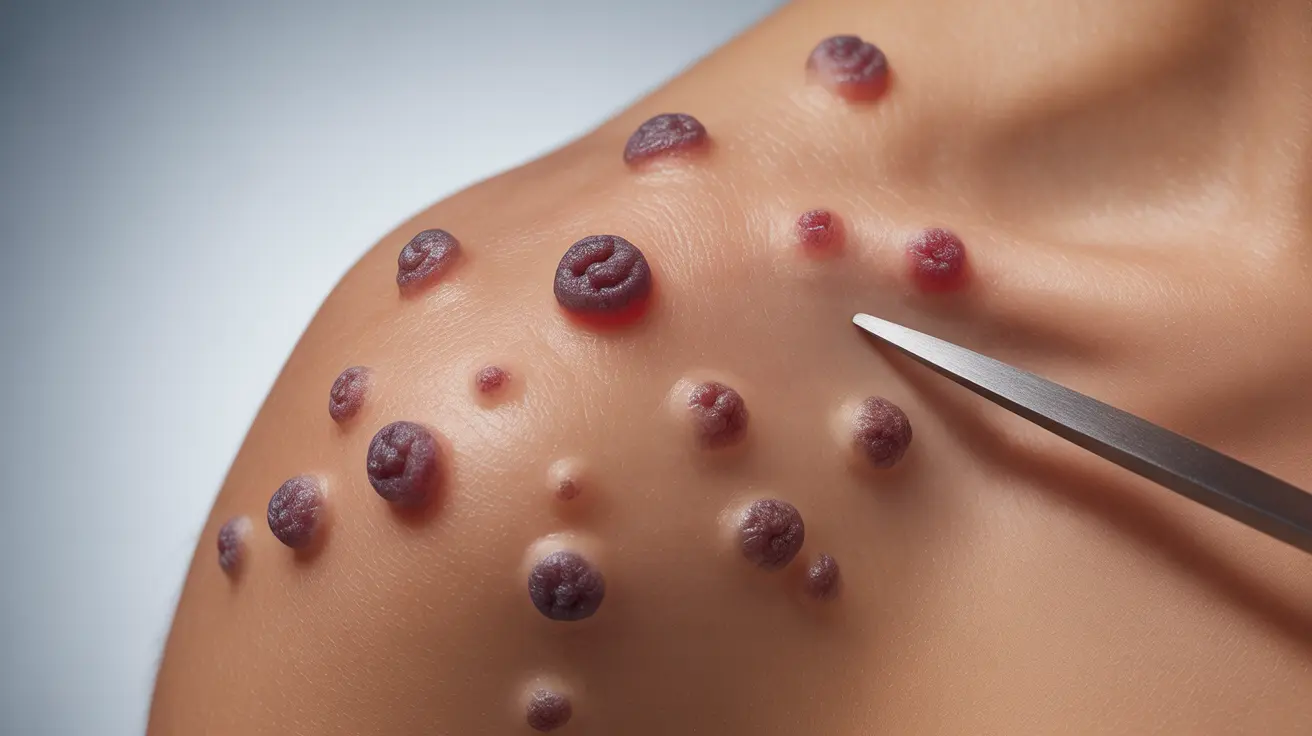Angiokeratoma of Fordyce is a relatively common skin condition characterized by small, dark red to purple spots that typically appear on the scrotum in men or the vulva in women. These benign vascular lesions, while generally harmless, can cause concern for those who discover them. Understanding their nature, treatment options, and relationship to other conditions is crucial for proper management and peace of mind.
In this comprehensive guide, we'll explore everything you need to know about angiokeratoma of Fordyce, from its characteristic appearance to available treatment options and important considerations for your health.
Understanding the Condition
Angiokeratoma of Fordyce consists of dilated blood vessels near the skin's surface, often appearing as raised, dome-shaped lesions. These spots typically range from 1-4 millimeters in size and may appear individually or in clusters. While they're most commonly found in adults, they can develop at any age.
Identifying Characteristics and Symptoms
The primary characteristics of angiokeratoma of Fordyce include:
- Dark red to purple-colored spots
- Raised or slightly elevated lesions
- Smooth or rough surface texture
- Possible bleeding when irritated or injured
- Usually painless unless traumatized
These lesions typically don't cause physical discomfort but may lead to psychological concerns due to their appearance. It's important to note that occasional bleeding can occur if the lesions are scratched or injured during activities.
Treatment Options and Management
While treatment isn't always necessary for angiokeratoma of Fordyce, several options are available for those seeking removal:
Medical Procedures
- Laser therapy
- Cryotherapy (freezing)
- Electrocauterization
- Surgical excision
The choice of treatment depends on factors such as the number of lesions, their size, and individual patient preferences. Your healthcare provider can help determine the most appropriate treatment approach based on your specific situation.
Understanding Related Health Concerns
While angiokeratoma of Fordyce is typically benign, it's important to distinguish it from other conditions, particularly Fabry disease, which can cause similar-looking lesions. Regular medical check-ups can help ensure proper diagnosis and monitoring of any changes in the lesions.
Prevention and Risk Factors
While completely preventing angiokeratoma of Fordyce may not be possible, certain measures can help manage the condition:
- Maintaining good genital hygiene
- Avoiding trauma to the affected area
- Regular skin examinations
- Prompt medical consultation for any concerning changes
Frequently Asked Questions
What are the typical symptoms and appearance of angiokeratoma of Fordyce?
Angiokeratoma of Fordyce appears as small, dark red to purple, raised spots on the scrotum or vulva. These lesions are typically 1-4 millimeters in size and may occur individually or in groups. They're usually painless but can bleed if scratched or injured.
How is angiokeratoma of Fordyce treated, and what are the available removal options?
Treatment options include laser therapy, cryotherapy, electrocauterization, and surgical excision. The choice of treatment depends on the number and size of lesions, as well as individual preferences. Many cases don't require treatment unless they cause discomfort or cosmetic concerns.
Can angiokeratoma of Fordyce be caused by more serious underlying conditions, such as Fabry disease?
While angiokeratoma of Fordyce itself is benign, similar-looking lesions can be associated with Fabry disease. It's important to receive proper medical evaluation to distinguish between the two conditions and ensure appropriate care.
Are there any methods to prevent the formation of angiokeratoma of Fordyce lesions?
Complete prevention may not be possible, but maintaining good hygiene, avoiding trauma to the area, and regular medical check-ups can help manage the condition. Early detection and monitoring of changes are important aspects of prevention.
Is angiokeratoma of Fordyce contagious or related to sexually transmitted infections?
No, angiokeratoma of Fordyce is not contagious and is not related to sexually transmitted infections. It's a benign vascular condition that develops independently of infectious causes.




